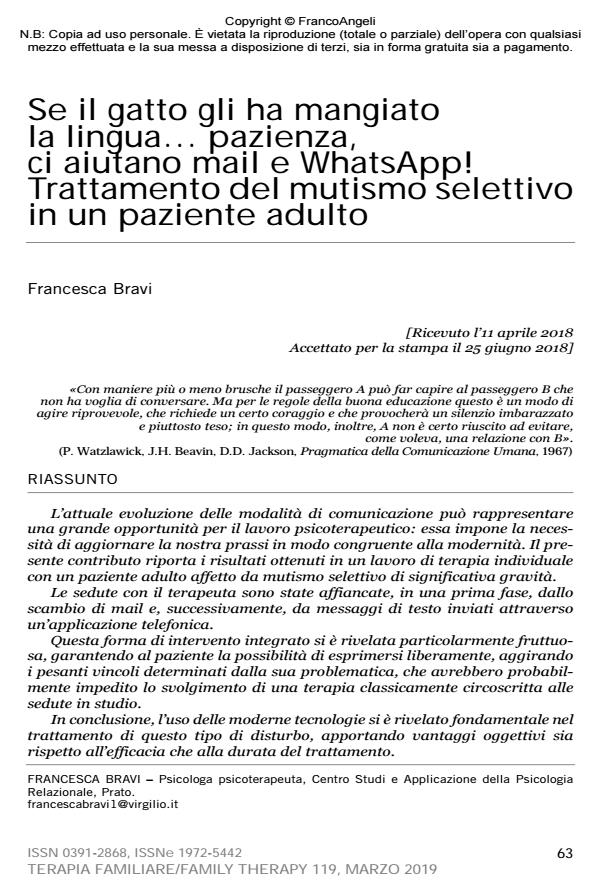If the cat ate his tongue... No worry, e-mails and WhatsApp help us! Treatment of adults’ selective mutism
Journal title TERAPIA FAMILIARE
Author/s Francesca Bravi
Publishing Year 2019 Issue 2019/119
Language Italian Pages 17 P. 63-79 File size 87 KB
DOI 10.3280/TF2019-119005
DOI is like a bar code for intellectual property: to have more infomation
click here
Below, you can see the article first page
If you want to buy this article in PDF format, you can do it, following the instructions to buy download credits

FrancoAngeli is member of Publishers International Linking Association, Inc (PILA), a not-for-profit association which run the CrossRef service enabling links to and from online scholarly content.
The current evolution of communication methods can represent a great opportunity for therapists: thus it becomes necessary to update our procedures consistently with modernization. The present article reports the results of an individual therapy with an adult affected by serious selective mutism. Therapy sessions were supported first by e-mail exchanges, and later via mobile text messaging. This kind of integrated communication proved to be particularly fruitful, allowing the patient the possibility to express himself freely, avoiding obstacles caused by his problem, that would have probably hindered a more classic face to face session approach. In conclusion the use of modern technology was fundamental in treating this type of disease, producing objective advantages with regard both to efficacy and duration of treatment.
Keywords: Selective mutism, social anxiety disorder, WhatsApp, psychotherapeutic emails, online psychotherapy, psychotherapeutic sms.
Francesca Bravi, Se il gatto gli ha mangiato la lingua.. pazienza, ci aiutano mail e WhatsApp! Trattamento del mutismo selettivo in un paziente adulto in "TERAPIA FAMILIARE" 119/2019, pp 63-79, DOI: 10.3280/TF2019-119005